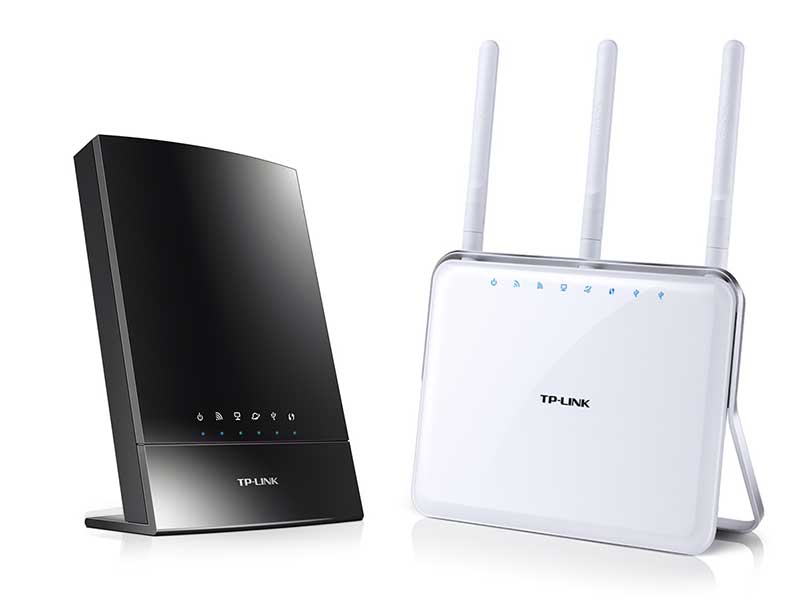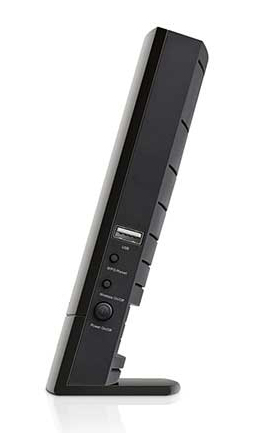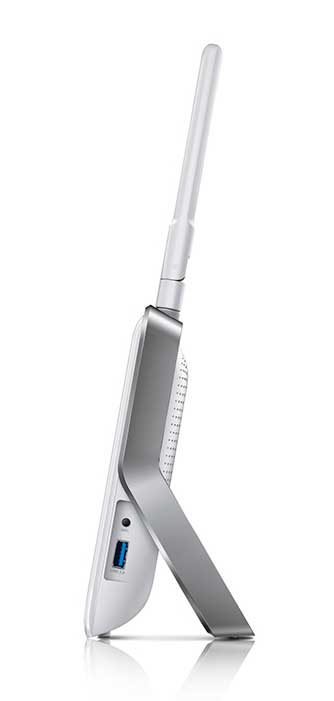 If you’ve been shopping for a new wireless router, you know there is certainly a lot to choose from. One of my favourite advancements is AC Wi-Fi networking technology which delivers a wonderfully powerful and fast connection with great reliability. Over the last few years even AC wireless networking has evolved, and today you’ll find a few varieties of routers in different AC class designations. Today we’ll be looking at two different routers for a comparison—an AC750 dual band router, and an AC1900 dual band router.
If you’ve been shopping for a new wireless router, you know there is certainly a lot to choose from. One of my favourite advancements is AC Wi-Fi networking technology which delivers a wonderfully powerful and fast connection with great reliability. Over the last few years even AC wireless networking has evolved, and today you’ll find a few varieties of routers in different AC class designations. Today we’ll be looking at two different routers for a comparison—an AC750 dual band router, and an AC1900 dual band router.
First impressions
 I’ve never actually used any TP-Link products before so this is a welcome opportunity to try out this brand’s routers. Once I got them out of the box I was pleasantly surprised. They seem to have a pretty decent build quality with some attention paid to the overall look and styling of the routers. While I’ve seen more than my share of routers over the years, it’s great to see more and more manufacturers paying attention to styling to make a router that isn’t ugly and will blend in nicely in any corner of your home. Subtle, simple yet pleasant and unobtrusive. In addition, the routers are both fairly functionally designed. They still have lots of LEDs with icons that won’t mean much to most people, but for the most part the designs are functional and serviceable, with buttons and ports conveniently positioned and the routers not taking up too much space. So my first impressions of TP-Link routers are immediately off to a good start. They certainly look the part, but let’s see how they perform.
I’ve never actually used any TP-Link products before so this is a welcome opportunity to try out this brand’s routers. Once I got them out of the box I was pleasantly surprised. They seem to have a pretty decent build quality with some attention paid to the overall look and styling of the routers. While I’ve seen more than my share of routers over the years, it’s great to see more and more manufacturers paying attention to styling to make a router that isn’t ugly and will blend in nicely in any corner of your home. Subtle, simple yet pleasant and unobtrusive. In addition, the routers are both fairly functionally designed. They still have lots of LEDs with icons that won’t mean much to most people, but for the most part the designs are functional and serviceable, with buttons and ports conveniently positioned and the routers not taking up too much space. So my first impressions of TP-Link routers are immediately off to a good start. They certainly look the part, but let’s see how they perform.
AC750
Starting out with the TP-Link Archer C20i AC750 wireless dual band router, setup was simple enough. Really it wasn’t significantly different from any other modern router. It was very straightforward and didn’t take much time at all and certainly didn’t require any technical know-how whatsoever. It has a bunch of features you might expect from a higher end router like IPv6 support, a USB port for networked storage devices and printer sharing, a configurable guest network, WPS security, and parental controls. In addition this router has a nice hardware switch to toggle Wi-Fi on and off, and a Power toggle switch. Yes, you can power this router down! This is huge. You don’t see a power toggle very often on routers (you’re usually left to unplug the power cable), or Wi-Fi toggle hardware switches for that matter. I know there are many people out there who like to power down devices to conserve electricity, or disable WiFi when it’s not in use, for added security. This router makes that much more convenient than it usually is.The 802.11AC wireless technology onboard gives you up to 3x faster connections than 802.11n routers. Of course AC networking isn’t just about speed. It has added range and stability too. You’ll see pretty solid performance with this AC750 router. It provides 433Mbps on the 5GHz band while the 2.4GHz band is capable of 300Mbps. That’s 733Mbps total bandwidth when you utilize simultaneous dual band connection power. With that you get solid range that is omnidirectional and strong.
AC1900
 Now let’s shift focus to TP-Link’s Archer C9 router boasting AC1900 technology. Of course it comes with a variety of extra features and power. It still has the configurable guest network, parental controls, WPS easy security and USB port. In addition it has a second USB port with USB 3.0 connectivity for 10 times faster throughput so that when you attach a storage device you can get nice snappy connectivity to it. This router features 1GHz dual-core processor to help it do more simultaneously, too. All of that is supported with the modem’s 1300Mbps on the 5GHz band, and 600Mbps bandwidth on the 2.4GHz band for a total of 1900Mbps bandwidth potential. It gives you added signal strength for better range, and even features the power and Wi-Fi hardware toggle switches like the AC750 model. The real feature that you’re looking at here is all that extra added bandwidth. 733MHz versus 1900MHz is more than double the bandwidth and you’ll definitely see the advnatage when using multiple devices simultaneously, particularly if you’re ever doing bandwidth intensive activities like online gaming, heavy downloads, or streaming high quality multimedia over your network.
Now let’s shift focus to TP-Link’s Archer C9 router boasting AC1900 technology. Of course it comes with a variety of extra features and power. It still has the configurable guest network, parental controls, WPS easy security and USB port. In addition it has a second USB port with USB 3.0 connectivity for 10 times faster throughput so that when you attach a storage device you can get nice snappy connectivity to it. This router features 1GHz dual-core processor to help it do more simultaneously, too. All of that is supported with the modem’s 1300Mbps on the 5GHz band, and 600Mbps bandwidth on the 2.4GHz band for a total of 1900Mbps bandwidth potential. It gives you added signal strength for better range, and even features the power and Wi-Fi hardware toggle switches like the AC750 model. The real feature that you’re looking at here is all that extra added bandwidth. 733MHz versus 1900MHz is more than double the bandwidth and you’ll definitely see the advnatage when using multiple devices simultaneously, particularly if you’re ever doing bandwidth intensive activities like online gaming, heavy downloads, or streaming high quality multimedia over your network.
AC classifications
The main takeaway here is that the AC class type (AC750 and AC1900 in this case) helps you see what the potential bandwidth performance of the router really is at a glance.
The classifications top out at AC2300 with levels at AC1900, AC1750, AC1600, AC1300, AC1200, AC750, and AC580. The number after the ‘AC’ tells you roughly how much total bandwidth you can expect from each router. For home users, or for small offices with limited bandwidth needs, an AC750 ought to work out just fine; but if you are expecting to use multiple devices simultaneously or have high-bandwidth needs, then a higher number will always be better. You should also expect your router to have a few added features tacked on as you go up that power scale, since your more powerful router can perform additional duties with all that added horsepower under the hood. All those numbers can seem confusing but the AC classification system is an attempt to simplify things for consumers, so that you can get an idea of the bandwidth you can expect from the router at a glance. When comparing an AC750 to an AC1900 router for example, you can expect a performance differential comparable to the quantitative difference between the numbers 750 and 1900. If the number is more than twice as big, you should expect more than twice the bandwidth. Simple as that. All the other added bells and whistles are a welcome bonus.
When you’re shopping for an AC router, you don’t always need the top-of-the-line model but it’s good to know off hand how one model compares to another in terms of bandwidth. For most people, that is often the principal deciding factor when picking out the right model, after all. More ports, USB 3.0, better range and signal strength are all great to have but not everybody needs tremendous range and besides, those features are easy enough to see on the side of the box. Figuring out the actual power of a router used to be relatively complicated, particularly once you get in to the dual-band realm, but with this numeric AC classification system you can see what you’re getting for an easier comparison of one model to another.



